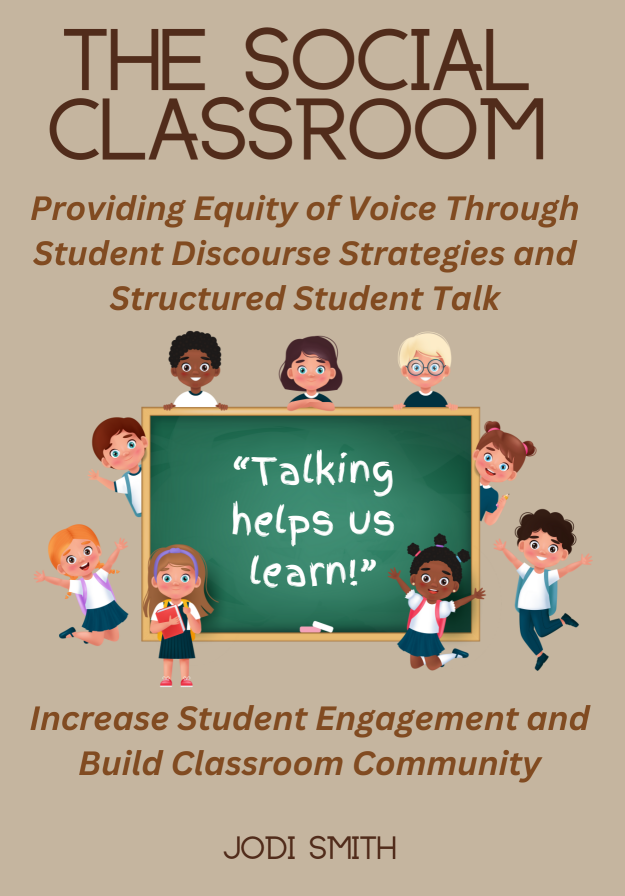Increase Engagement by Letting Kids Talk
In today’s classrooms, engagement and collaboration are vital for meaningful learning. One of the most powerful ways to foster this is through student talk — the conversations students have with one another about their learning. But why is student talk so important, and why should it often be structured? Let’s explore these questions while examining strategies like Jigsaw, Give One, Get One, and Think-Write-Pair-Share to understand their impact.
Why Is Student Talk Important?
Student talk is not just about speaking; it’s about thinking, processing, and learning through dialogue. Here are some key reasons why it’s essential:
- Enhances Understanding:
-
- When students explain their ideas to peers, they deepen their understanding by articulating their thoughts.
- Hearing diverse perspectives helps students consider alternative viewpoints and expand their knowledge base.
- Builds Critical Thinking:
-
- Collaborative discussions require students to analyze, evaluate, and synthesize information.
- Engaging in dialogue fosters problem-solving and reasoning skills essential for 21st-century learning.
- Develops Communication Skills:
-
- Regular opportunities for discussion help students become effective communicators.
- They learn to listen actively, respect others’ viewpoints, and express their ideas clearly.
- Fosters a Sense of Community:
-
- When students share and discuss, they build relationships and create a supportive classroom environment.
- This sense of community boosts engagement and makes learning more enjoyable.
Why Is Structured Talk Important?
While free-flowing conversations have their place, structured talk ensures that discussions are purposeful and inclusive. Here’s why structured talk is particularly beneficial:
- Encourages Equal Participation:
- Structured formats give all students a voice, even those who might be shy or hesitant students.
- Clear roles and turn-taking prevent dominant voices from taking over the discussion.
- Keeps Conversations Focused:
- Structured activities help students stay on-topic and dig deeper into the subject matter.
- They provide a framework that guides students through productive and meaningful exchanges.
- Supports Diverse Learners
- Students who need additional support benefit from structured prompts and guidelines.
- These frameworks ensure that everyone can contribute, regardless of their confidence level or language proficiency.
Examples of Structured Talk Strategies
Let’s look at three powerful strategies that illustrate the importance of structured talk:
1. Jigsaw
- How It Works: Students are divided into small “Home Groups” and assigned a portion of the topic to become “experts” on. They then meet with their “Expert Group” to discuss and learn before returning to teach their Home Group.
- Why It’s Important: This strategy ensures that every student has a unique contribution, fostering accountability and collaboration. For example, in a science lesson on ecosystems, each group might study a different biome and then share their findings with others.
2. Give One, Get One
- How It Works: Students write down an idea or answer related to a topic and then move around the room, sharing their idea with a partner and receiving one in return. They continue this exchange with several classmates.
- Why It’s Important: This activity promotes active listening and exposes students to multiple perspectives. In a social studies class, students might share facts about historical figures, building a broader understanding through peer contributions.
3. Think-Write-Pair-Share
- How It Works: Students first think about a question individually, then write their thoughts, share with a partner, and finally discuss as a class.
- Why It’s Important: This strategy scaffolds the discussion process, allowing students time to organize their thoughts before sharing. For instance, in a reading lesson, students might reflect on a character’s actions, discuss their ideas with a partner, and then contribute to a group analysis.
NEW BOOK; The Social Classroom
The Social Classroom: Providing Equity of Voice Through Student Discourse Strategies: Increase Student Engagement and Improve Classroom Community
Unlock the power of student talk, building a vibrant, engaged classroom! The Social Classroom dives into practical student discourse strategies designed to spark meaningful conversations, foster collaboration, and elevate learning outcomes. This guide provides educators with student discourse strategies to improve student engagement, strengthen classroom community, and create an environment where every voice matters.
From structured discussions to informal chats, discover how to use student talk as a tool to boost participation, critical thinking, and a love for learning. Perfect for teachers looking to inspire connection and collaboration!
- Great book for new teachers or teachers looking to increase engagement and equity of voice in their classrooms.
Conclusion
- Student talk is the backbone of an engaging and collaborative classroom. It empowers learners, builds critical skills, and fosters a sense of community. Structured talk strategies like Jigsaw, Give One, Get One, and Think-Write-Pair-Share ensure that discussions are inclusive, focused, and meaningful. By incorporating these strategies, teachers can create a dynamic environment where every student’s voice contributes to the collective learning experience.
- Start transforming your classroom with these strategies and watch your students thrive through the power of purposeful conversation!
- Make your classroom a place where you would want to spend your days of learning.
Make Learning FUN for Kids!
